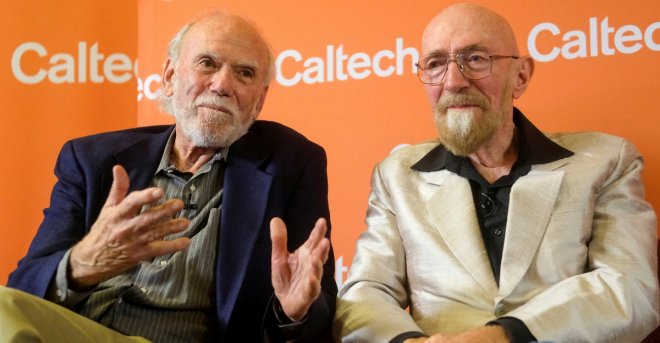
The 2017 Nobel Prize for Physics has been won by three American scientists for the discovery of the gravitational waves predicted by Albert Einstein a century ago.
The Royal Swedish Academy for Science had declared the award for Rainer Weiss, Barry C. Barish, and Kip S. Thorne for their contributions in the development of the Laser Interferometer Gravitational Wave Observatory (LIGO) detector and for their observations of gravitational waves.
The gravitational waves formed by the collision of two black holes were detected by a pair of gigantic laser interferometers of the LIGO detector. The waves were very weak and the laser detectors could spot differences which were thousand times smaller than that of an atomic nucleus.
The first observations were made on September 14, 2015. The waves took 1.3 billion years to reach earth from its origin. Another observatory, VIRGO, in Italy had also made frequent readings of the waves.
The laser-based interferometer was designed by Reiner Weiss in 1970s based on his observations of background noise which disturbed measurements. Kip Thorne and Rainer Weiss had already believed in the presence of gravitational waves.
Weiss said that the award of 9 million Swedish Crown ($1.1 million) prize was a recognition for 1000 scientists who are working on wave detection.
According to Reuters, Rainer Weiss said that "There are huge amount of things in the universe that radiate gravitational waves. The black holes are the most obvious but there are many, many others."
David Haviland, a Nobel committee member told Reuters, " These represent some of the most precise measurements that are made by physicists."
Alberto Vecchio of the University of Birmingham's Institute of Gravitational Wave Astronomy said, "This is just the beginning of a new roller-coaster exploitation of the universe."
Albert Einstein had earlier believed that it would never be possible to measure the gravitational waves. These waves are radically different from other electromagnetic waves like radio waves, visible light, infrared light, and x-rays. Observation of the wave gives greater hopes for the scientists for their astronomical studies.









